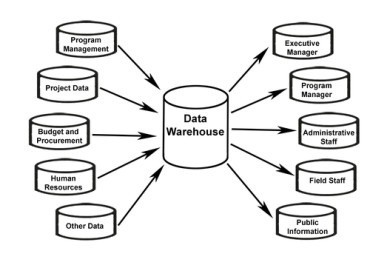
Cloud storage will continue to play a large role in organizations’ data management approaches as data volumes and speeds continue to increase.
It’s no secret that we are witnessing an explosion of technology from the expansion of 5G to the ever-increasing number of internet of things (IoT) devices. In fact, recent reports predict an estimated 1.5 billion people will be connected to 5G networks by 2024, and that there will be more than 41 billion IoT devices by 2027, up from about 8 billion in 2019. And the COVID-19 pandemic has only accelerated this shift, as remote workers have had to increasingly rely on technology and connected devices to access tools and data remotely, ultimately forcing many industries to go digital.
At the core of this technology boom is data. As a result of technological growth, society and organizations are already generating data at an unprecedented rate and immense volume. An IDC report from this year predicts the amount of data stored will reach 59 Zettabytes in 2020 alone, and that the next three years of data creation and consumption will exceed that of the previous 30 years combined.
See also: 6 Data Management Tips for Small Business Owners
As a result, the business landscape is being driven by the need to manage this increasing amount of data, as the future growth of smart technologies and business depends on having both real-time, easy access to huge troves of data of all forms and structures, and being able to analyze it effectively. With this, many companies are being forced to rethink their IT infrastructure and approach to data storage and management.
Evolving IT infrastructure to prioritize data
Data is the foundation of most business processes. From identifying new market or business opportunities to pinpointing customer patterns or risks like fraud, having easy, real-time access to data to help garner actionable insights can be the difference between success and failure for most organizations.
But as more companies come to that realization, many are also recognizing that an organization’s IT infrastructure is a critical element to obtaining measurable results. They’re collecting more data than ever before, but there are major gaps between collecting that data and intelligently acting on it.
Thus, they must have the appropriate infrastructure in place that enables team members to pull on-the-fly, actionable insights from the increasing amounts of data. Organizations must move away from the traditional legacy approach of using on-premise storage as the amount of data being produced is quickly outgrowing its capabilities, adding unnecessary costs and complexity to procure, maintain, and extend capacity. Also, adopting an “abundance mindset” is critical, where all business data should be considered valuable, and the more data stored and saved for future use, the better.
Migrating to the cloud
By now, most companies know that the optimal way to scalably and efficiently manage their data is by moving it to the cloud or multiple clouds. Historically, many organizations have opted for the larger, more mainstream public cloud storage providers from the likes of Amazon Web Services, Google Cloud Platform, and Microsoft Azure. However, with their associated high costs, hidden fees, rigid capacity, and vendor lock-in, coupled with the recent technology and data boom, and the disruption and volatility brought on by COVID-19, many organizations are opting for a multi-cloud approach instead of betting on just one cloud vendor.
Cloud data still requires backing up, and it’s not optimal to hold backups in the same cloud as the primary data. As a result, more organizations are keeping their primary data in one cloud while housing a backup copy in a different cloud. A hybrid cloud approach is another alternative, as it enables organizations to run their platforms on-premise on a private cloud that can be linked to additional services on a public cloud.
When it comes to location, in the IoT ridden world that we live in where devices are both distributed and interconnected, it is crucial for organizations to be able to store data locally. It can be extremely expensive to open multiple on-premise data centers in different locations, and not ideal to process data in a location that is a long distance from where it is operationally needed. In this situation, storing data in the cloud is a much more feasible option. Due to its scale, it has the ability to run multitudes of data centers around the globe while being closer to the edge.
Ensuring future data success with the cloud
Regardless of the approach, cloud storage will continue to play a large role in organizations’ data management approaches as data volumes and speeds continue to increase. While the exact future of the technology landscape remains to be seen, one thing is certain: storing your data in the cloud is a fundamental step in enhancing business operations and offerings, making data much more manageable and accessible by giving businesses easy and fast access to invaluable treasure troves of information which will ultimately open the door to future innovation and business opportunities.




























